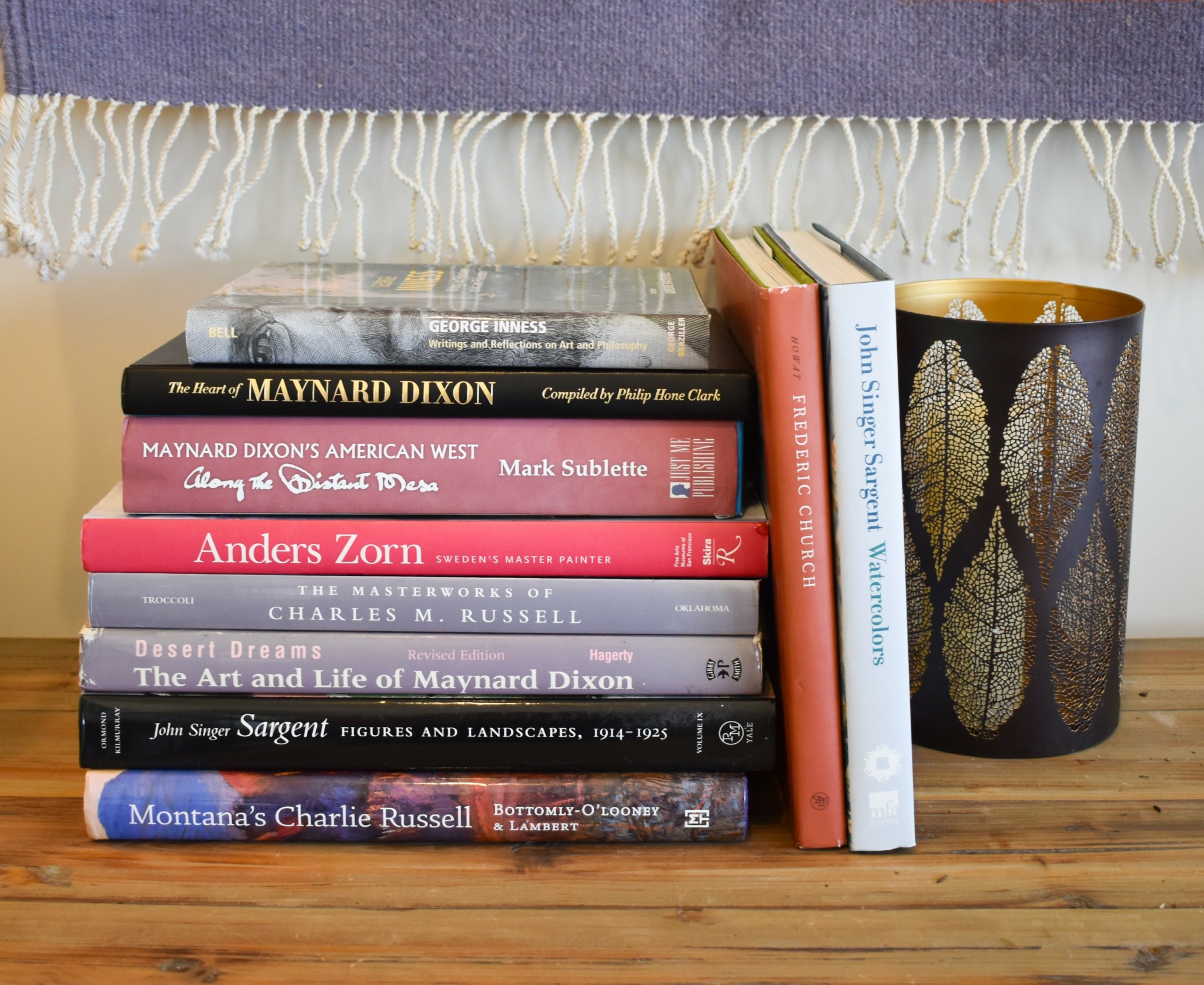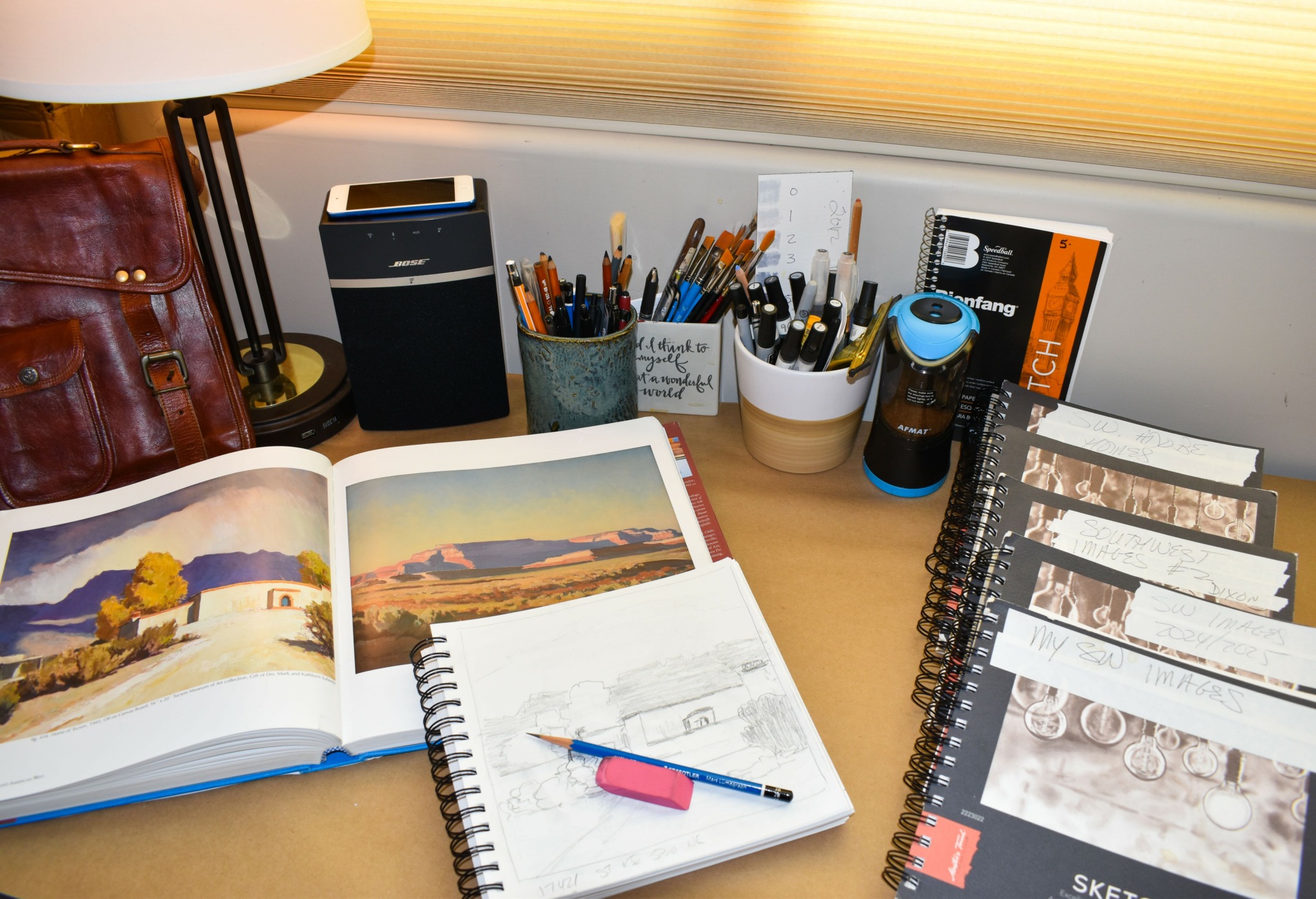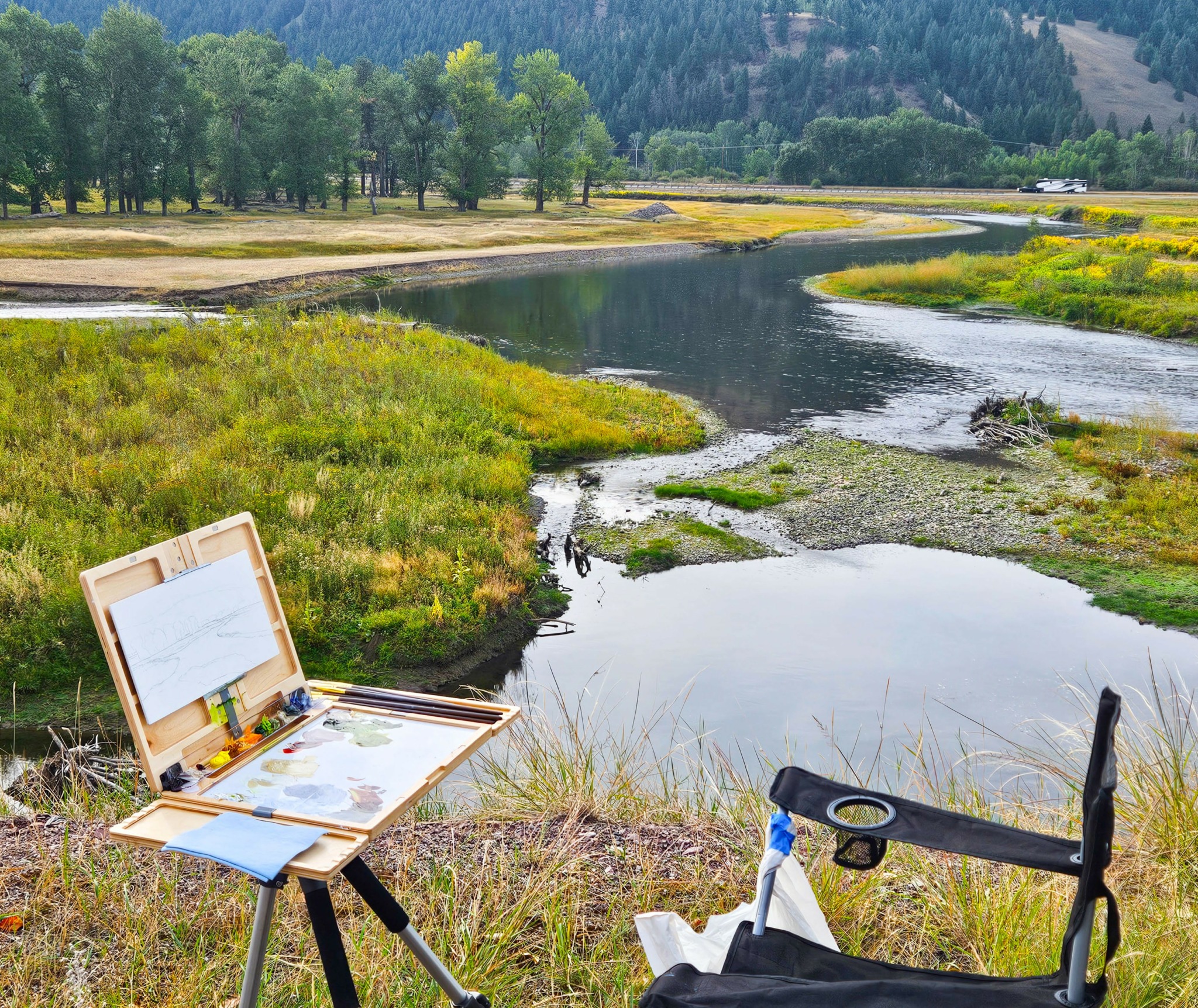We caught up with the brilliant and insightful Kelly Sooter a few weeks ago and have shared our conversation below.
Kelly , appreciate you joining us today. Can you talk to us about how you learned to do what you do?
How did I learn to do what I do?
The journey to learn any craft is highly individual – yet there are common skills and practices that yield solid results. My journey, like many artists before me, began before I could read. At age five I scoured pictorial books with images of vast Midwest fields and at age of ten begged to accompany my mother to her friend’s home that had hand painted Nordic art sitting in every nook and cranny. They had tea while I wandered room to room trying to figure out how a brush could make certain marks with multiple colors in one stroke.
In college, I searched nation-wide for serious art programs that taught classic European concepts and techniques but there were none. Even today, the focus of serious art schools is still modern art. I wasn’t interested in programs that let me “do my thing” and “paint my emotions”. I seriously wanted to pursue a classic European art education – as it formed the foundation of the world’s greatest works.
I had no choice but to find and study with every European Master that traveled to the US. It didn’t matter what genre they painted. From my decades of study with them, I learned the time-honored practices of composition and design, color theory and brush control. It didn’t matter if I was learning Russian Zhostovo Florals or Iconography or Nordic art forms – all ancient European genres are based on the design rules of Baroque & Rococo. To top it off, most Masters I studied with didn’t speak English.
I experienced the same daily study rituals artists had experienced centuries ago. I’d watch a demonstration and then I’d sit at my table to recreate free-hand what they had just taught – and was immediately critiqued. I was only allowed to use white paint on a black background. Every flaw jumped off the surface. There was nowhere to hide. Once our daily session on color and composition started, the teacher would throw a tube of paint at me that was an odd color or draw a “bug” (I hate bugs – even more in my artwork) on my painting surface while I was refilling my coffee to force me to incorporate it into my palette or design without breaking the rules – and they smiled and smirked when they did it! It was intense, but I stuck with it knowing that every skill I learned would be used in the future.
I then spent years locked in my studio working out how to paint landscapes using oils as well as texture paste covered with gouache and then oil – and applying everything I had learned from my studies. Other artists would plead with me to teach them how I got certain effects but they weren’t an easy-to-do “gimmick”. They were one-of-a-kind effects that even I couldn’t recreate as they were the result of pure experimentation.
I never ceased studying the works of great artists of the past and present. Every day I still pour through paintings by Maynard Dixon, Russell, Christensen as their work moves me the most – and analyze what they did and how they did it. My sketch books are filled with their work as I seek to unlock their secrets and perspectives.
Most importantly, I sought out wise artists who confirmed my set rule to NEVER paint for a particular audience or set of collectors – that is definition of commercial art. Rather, I paint for myself – what interests me and do it the best of my ability. That’s what makes it highly unique from other artists’ work and lets it stand alone in the art world.
How could I have spead up the learning process?
Today, artists have the Internet and YouTube, which are great, but not all instruction is good and, if you are just starting out, you have no concept of what is good instruction and what is bad. There is no fast way to achieve the skills you will need to become proficient in your craft. Many try it, and it shows in their work. There are zero shortcuts.
Every creative must decide what compels them and then figure out how to go after the skills needed to be proficient enough to “cut loose” and really create it. That will take decades for most. In art the 10,000 brushstrokes is just the starting point. It requires a lifestyle permeated by book study, art instruction with best you can find, and massive studio time to work out what you’ve learned.
What skills do I think are the most essential?
The most potent skills are commitment and perseverance – the discipline to practice every day. It can be in the studio or on the patio sketching or taking photos on a road trip. Like Rick Ruben said in his book The Creative Act: A Way of Being – “You are either engaging in the practice or you’re not. It makes no sense to say you’re not good at it. It’s like saying, ‘I’m not good at being a monk.’ You are either living as a monk or you’re not.”
Second, most successful artists have honed their skills in the basics of composition, design and color theory. Even the most abstracted modern art has great design & composition at its core. It’s what makes it beautiful. If an artist says “I just threw paint at the canvas”, it will look like it and feel confusing to you.
Third, learn how to observe everything around you, from the mundane to the profound. It will seep into your imagery seamlessly. Part of observation is a good sketching practice. I have several sketch books going at any one time. The sketches are simple – many with only ten lines or so, but they convey what I’m seeing or how I need to rearrange what’s in front of me visually.
Finally, study the masters – including those in other genres. Read autobiographies of any master artist you can get your hands on – how they practice, overcame obstacles and achieved their artistic voice. Most of these stories are very similar. From them you’ll learn that playing it safe in your studio won’t cut it. You must have the guts to try new approaches and get out on “adventures” to sketch, photograph and paint – because nature is the best teacher. I’m currently studying the artistic process of Rick Ruben, the most successful record producer in history. He’s both confirmed and profoundly challenged me in my artistic practice and perspective. I learned to never read his book after 9pm. If I do, I’m up chewing on what he said until morning.
What obstacles stood in the way of me learning more?
The lack institutions offering a classic art education is profound. You have to search and find the teachers that will give you the exact skills you need. They’re out there. So far I’ve only found that the Art Department at Brigham Young University provides a solid art foundation. Many great artists have come out of that school.
The logistics of studying with great artists is difficult and expensive. Many times I had to fly across the country to study for a week with a Master I needed to learn from. That wasn’t easy with three very active sons in middle school and high school and an overactive Jack Russell Terrier named Calvin. However, I was blessed with an incredibly supportive husband who worked from home. Without that, I would never have become an artist at this level.
However there is an ENORMOUS HIDDEN OBSTACLE that de-rails many promising artists and it happens without them even realizing it – and that is staying with an art teacher for years. Great artists don’t have time for weekly art lessons with a group of students. They are too busy creating great works of art. That’s why they teach for a week and then leave town.
The good news is it’s simple to avoid and here’s how to do it. First, when starting out, find art teacher locally to get the basics but study with them only a year at most. After that, get in and get out as fast as you can. Learn what you need to and then move to the next skill/teacher. Why? Because the better you get at art, the more you will take on the “look” of your teacher. Once it’s part of your work, it’s impossible to get it out. Believe me, I know! I’ve had it happen to me and I’ve seen a top master paint with his understudy for a week to help in his class – and he was never able to highlight a rose petal the old way again. He wasn’t a happy camper after that.
Yes, it’s safe to stay put with the same teacher and not seek out people who will teach you the next skill – I get it. It’s hard to create your own designs and figure out your own palettes, but you have to struggle with these skills to stand on your own two feet as a true artist. Art making is earned. You need to do tens of thousands of brushstrokes and create your own techniques. The only exception is if you need to study with a teacher to keep perfecting a technique. The Masters I studied with only came to the US every year or two, so I could continue refining those skills with them without it unduly impacting my artistic voice. As soon as I could exit from that Master, I did.
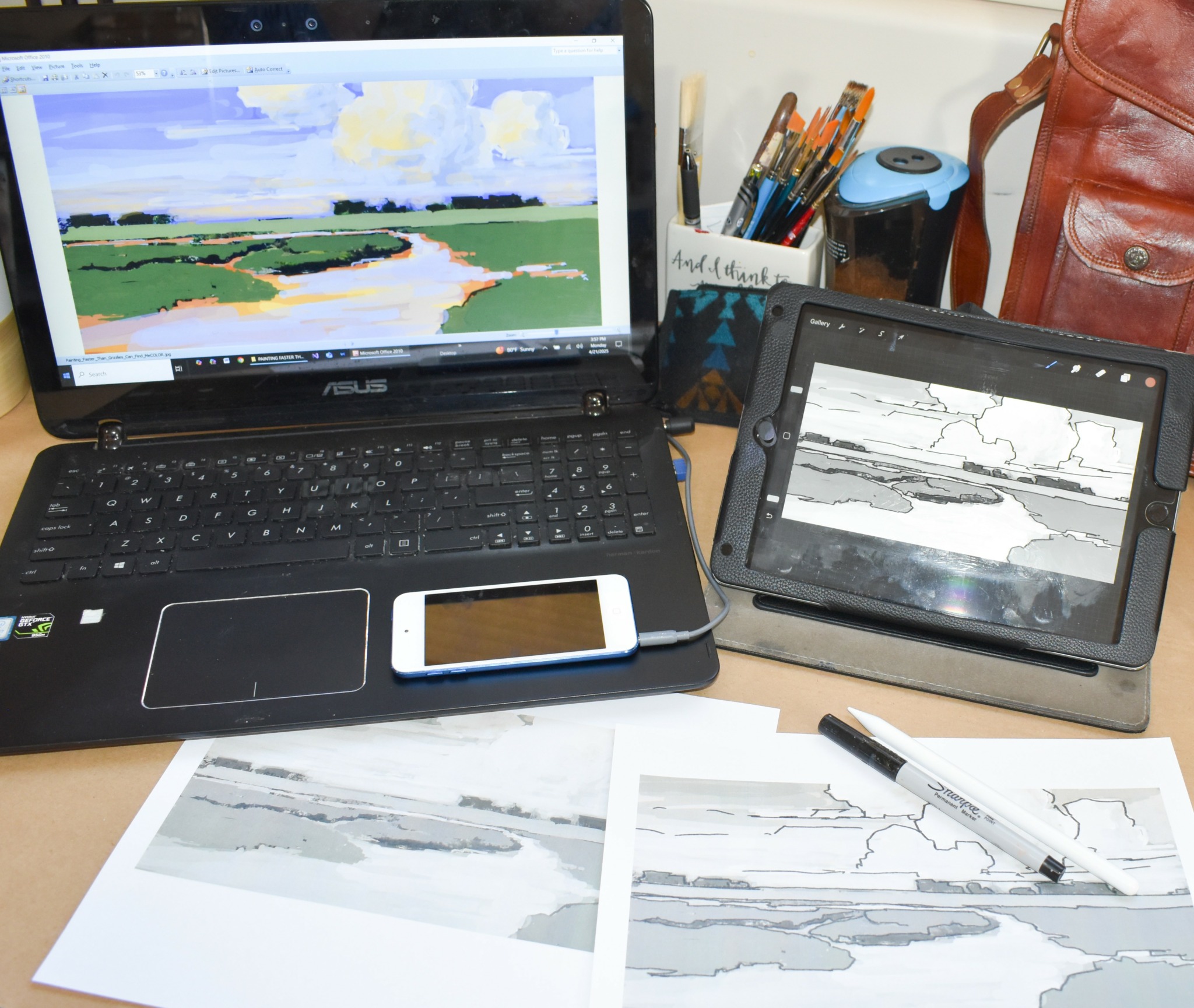
Kelly , love having you share your insights with us. Before we ask you more questions, maybe you can take a moment to introduce yourself to our readers who might have missed our earlier conversations?
I’m a contemporary landscape artist who has been pushing brushes around oil-primed canvas for over 40 years. The older I get, the more modern and high key my imagery becomes. I use to be scared of large canvases – now it’s the small ones that drive me crazy, as they force me to fit critical transitions in temperature and value into very small spaces.
Not a day passes where I’m not discovering a new technique, or learning how to solve a color or composition issue. Get me outside plein air painting and I’m tackling everything from being chased by hogs, to trying to scare away local grizzly bears and figuring out how to paint around cows, goats and horses (that love to eat titanium white paint if they can get to it). I won’t even try to explain how I manage red ants in the desert. There’s never a dull moment, but that just adds to the adventure we call life.
My work is officially considered “crossover” – as it has one foot in centuries-old classic landscape genre and the other foot planted firmly in the modern art world. I’m basically pioneering a new landscape genre. The galleries who ask me to exhibit are now exclusively modern – and I mean “modern” in every sense of the word. Now I realize that a modern aesthetic bent has always been present in my imagery. A gallery owner once described how collectors came in to purchase a “more modern painting” for their home or office but weren’t ready to go “full modern” yet. They’d look through many modern works only to turn a corner to see my landscape paintings – with modern imagery they could relate to. They would end up buying my paintings.
Each work takes 4-6 weeks and requires at least four layers of oil paint. The oil-primed canvas I use helps the reflective qualities of the high quality oil paints I use – many of which are stone ground. Underneath the four layers is a transparent golden oil paint that is no longer available. As I add layers of semi-transparent paint, I’ll rub oil off in strategic places to reveal a golden glow from underneath – representing the beauty inside each of us that’s revealed as we age.
Because my work differs wildly from beautiful classic landscapes created by other artists, I’ve had to pay a steep price. Other artists are well meaning, but it’s clear that most prefer I paint a landscape like all the other landscape artists do. It’s like there’s a formula I’m expected to follow – like placing trees, rocks, shrubs (and maybe a stream) in the foreground and rows of more trees and an occasional mountain range in the back. To some, the world is not right if I put in a yellow sky! They mean well, but I need to follow my path.
While collectors of my Southwest art purchase to either compliment their desert homes or to remember the beauty of a memorable trip, most collectors are drawn to my work because as I portray my life journey in each piece – and they also see their own life portrayed in every brushstroke. They see it without me saying a word. I had a collector walk into a gallery who was facing burnout. She stood in front of my large peaceful painting and started crying. She saw her path to healing and hope in the imagery. She bought it, the hotel swapped out their painting above the bed for mine, and when she flew home, the gallery shipped the painting to her home. This and countless other stories are my reward – my payment.
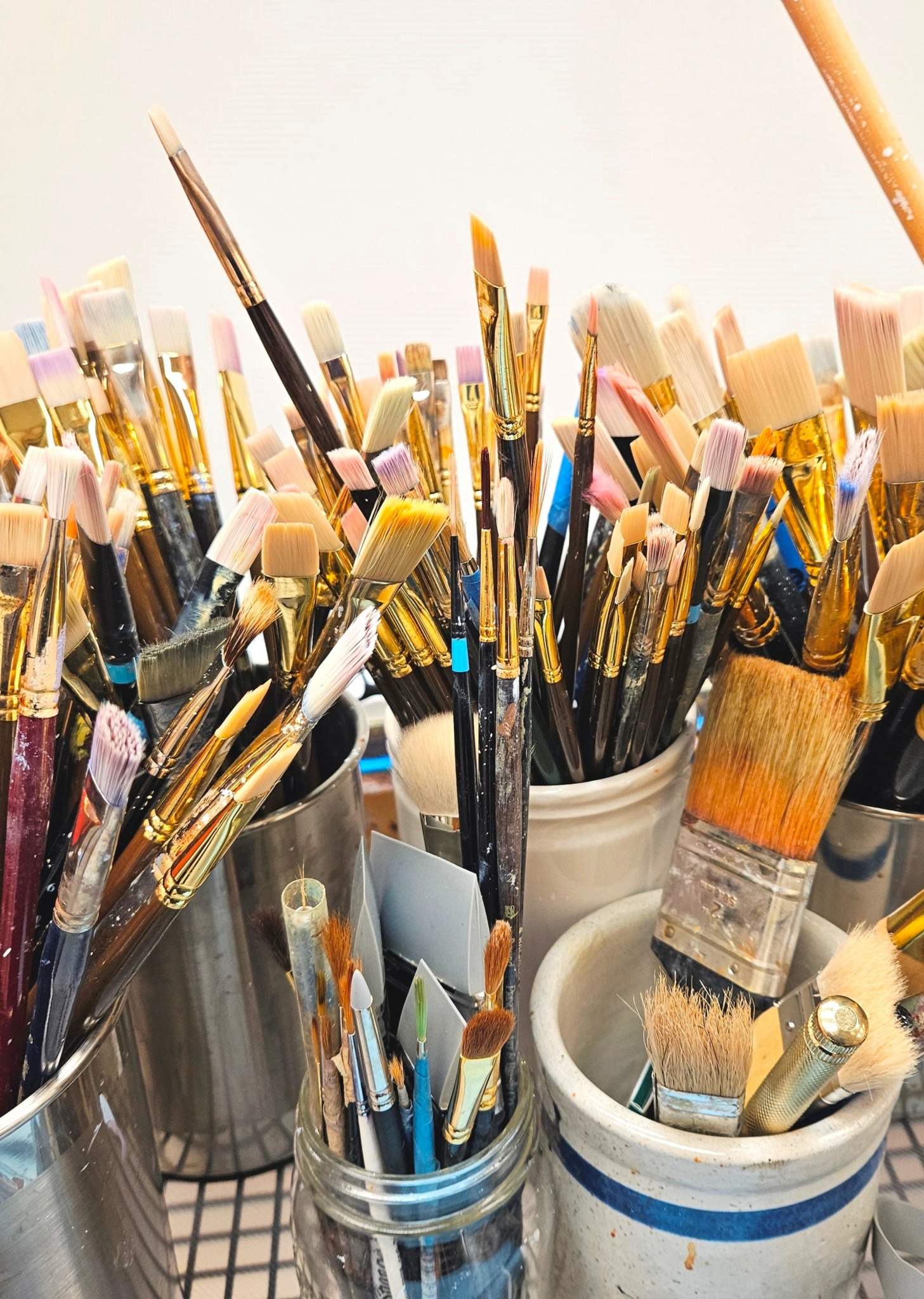
We’d love to hear a story of resilience from your journey.
Artists are not immune from life’s problems. We get through these tough spots with sheer grit and determination. Our skills, our work product and professional goals depend on it. However, some storms are as impactful as a CAT5 hurricane – testing both our resolve and commitment to our craft.
My CAT5 hit fall of 2019. Just when my art began taking off, with a first place award at East Coast exhibit, and plans for a museum exhibit, I developed an aggressive breast cancer that was triggered by my genetics. Thankfully, genetic testing showed a clear path to treatment and I had the name of the oncologist with the best track record in the nation just an hour away. It took 4+ years of weekly treatment, but my life was spared.
From the beginning of treatment I knew I needed to continue my professional goals – including learning and planning for post treatment exhibits. It’s how I got through it. There were months I couldn’t even get to a chair, but my goals kept me focused on creating designs, taking an online class (couldn’t do the homework) from the best landscape artist in the country, painting in a small corner of a room rather than in my large studio, and, most importantly, scanning online hundreds of miles of off-roads in Montana for a plein air (outdoor painting) trip after I regained my strength. That was my carrot. I was offered Hawaii, but my heart and body wanted to be tested in the wilds of Montana. Of course, I chose to paint the North Fork of the Yellowstone River which is smack in the heart of grizzly country.
I took that trip this spring and worked it into the journey to my southern UT studio. Google stated that only 30 grizzlies had been sighted at that location over the past 30 days. So was that 30 bears seen by 1 car or 30 cars seeing 1 bear? So I loaded up on bear spray and other methods of deterrent and hit the road. I passed the test and never painted in a more beautiful location.
No one asks for trials where we zero control, but we have the choice to be thankful every day for life and the ability to hone our craft. I’m now starting a series of paintings from that location. By the way, through luck and a very loud BOSE speaker blasting country music (I heard grizzlies avoid loud music unless they’re hungry), I was only visited by cows, horses and a large group of goats.
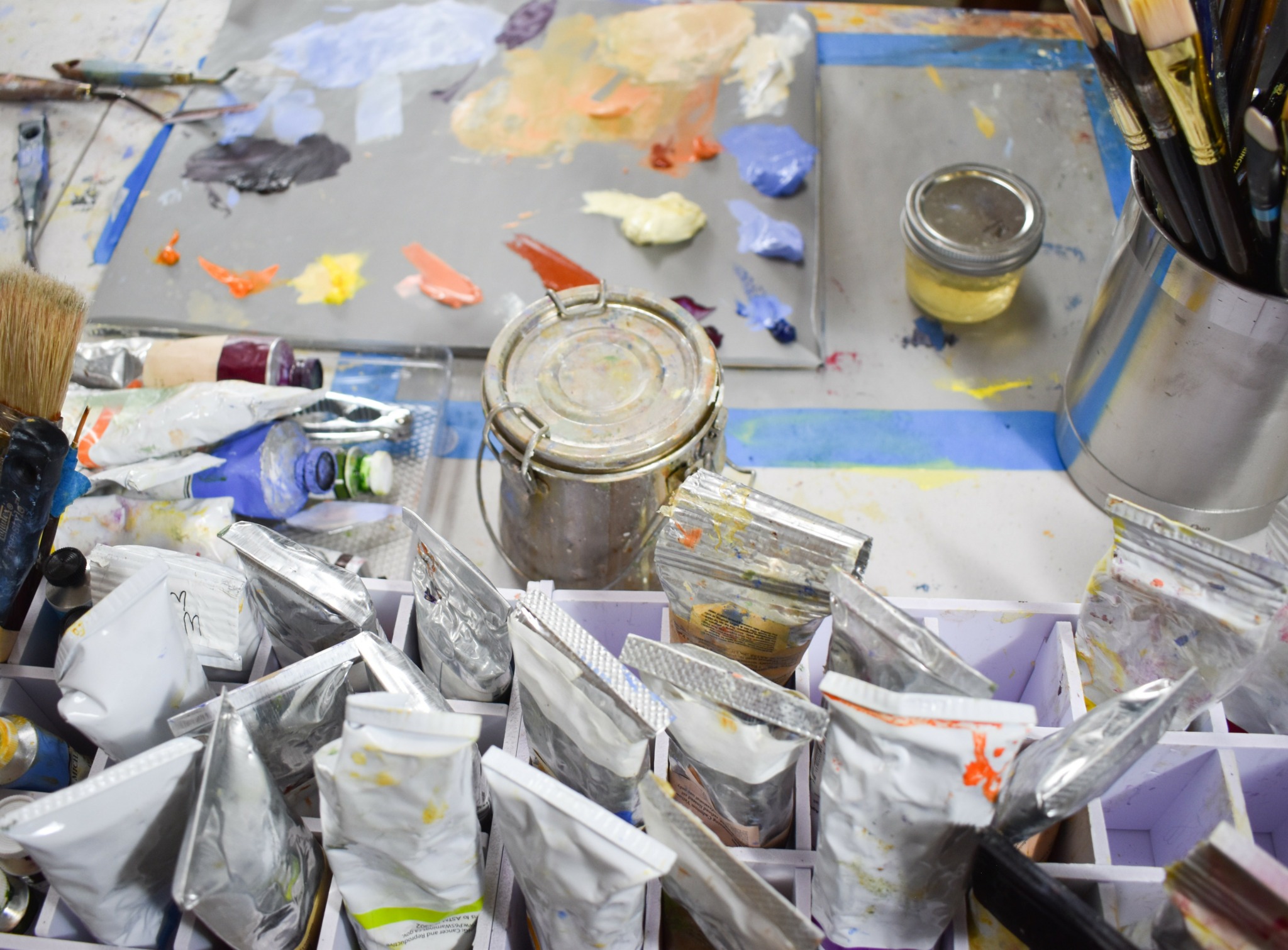
Is there mission driving your creative journey?
My mission in art-making is to learn all I can from nature and from life experiences and let the creative process infuse my imagery with lessons from my own journey. Then I have to trust that the process will result in me creating the most authentic, original and unique art possible. Collectors find me – not the other way around because they see their own lives portrayed in the imagery.
Through personal challenges I’ve learned that true courage and beauty is carved from the harshest of conditions – just like the mountains of Wyoming and the red mesas of Utah. On canvas they communicate strength and perseverance and collectors somehow see that. Like the mountains, we too become more courageous and “beautiful” after walking through the fire.
My reward is found when I reach people deeply. Whether that’s someone buying a desert piece that reflects what they experienced in the Southwest, or an elderly lady in Washington State buying a small painting of a cypress tree in the middle of a farmer’s field that reminded her of Sunday drives with her recently deceased husband. Their favorite spot on their weekly drive was that field. The tree was cut down and she was devastated. I was able to tell her that my painting was of that exact field and tree. I was able to paint it before it was gone. Yes, tears flowed, but it’s collectors like this that find my work. I just strive to impart some measure of joy, perspective and even healing.
Contact Info:
- Website: https://www.KellySooter.com
- Instagram: kellysooterfineart
